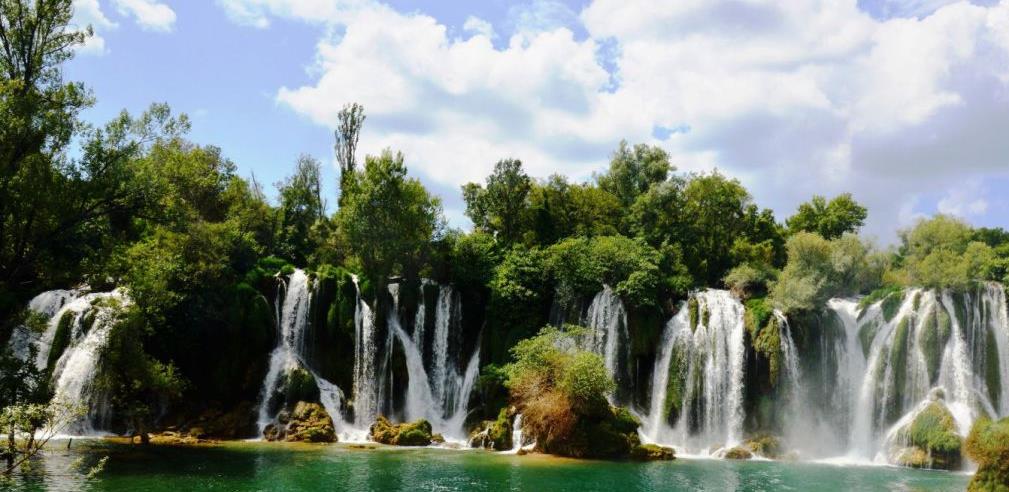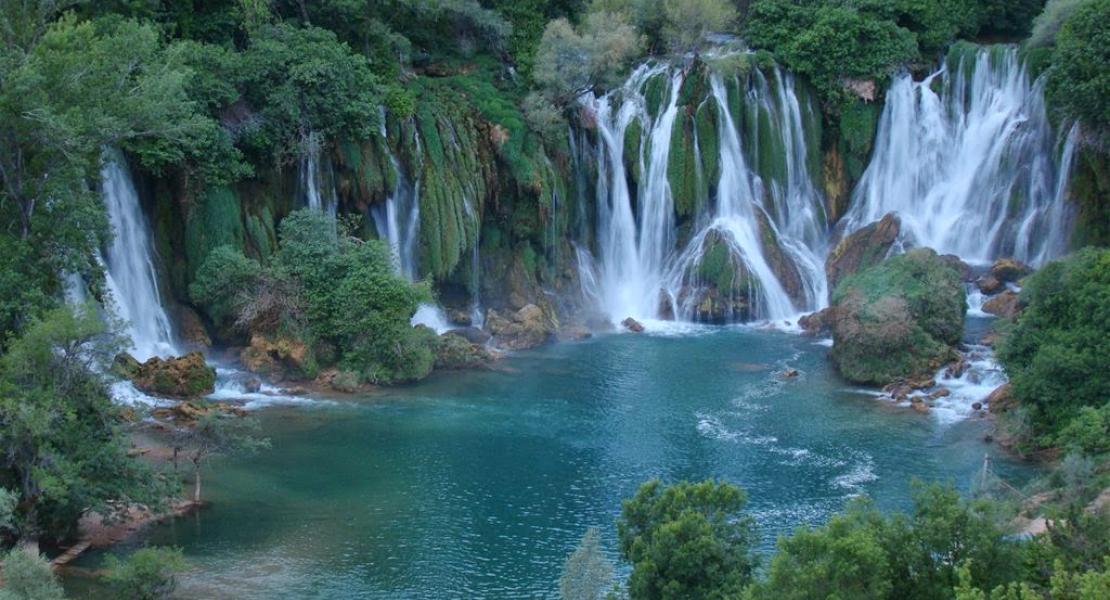Monitoring i zaštita vodnih resursa
Prof. dr Enver Karahmet
Senita Isaković MA
The quality of water resources is increasingly threatened by various types of pollution. Human activities over the past 50 years have caused record levels of water pollution. It is estimated that more than 2.5 billion people worldwide do not have adequate wastewater treatment. Every day, 2 million tons of wastewater and other effluents are discharged into the world's waters. This problem is even more pronounced in developing countries, where more than 90% of untreated wastewater and 70% of untreated industrial waste are discharged into surface waters. As the population increases, migration from rural areas to cities accelerates. It is estimated that 6.4 billion people will live in cities by 2050, compared to 3.4 billion in 2010. If such rapid growth is not adequately addressed through proactive planning and financing, it will be an additional challenge for water quality. Inadequate infrastructure, as well as poor maintenance of existing ones, leads to problems in municipal waste management, as well as in wastewater treatment and discharge. Human activities usually affect the distribution, quantity and chemical quality of water resources. The range of human activities that affect the interaction of groundwater and surface water is wide. Freshwater reserves are not inexhaustible natural resources. The dynamic development of society and the increasing pressures on the natural environment, and therefore on water, are becoming one of the key issues of sustainable development, since pollution of groundwater and surface water additionally affects the reduction of water supplies. Access to adequate quantities of good quality water is essential for human health; productive freshwater ecosystems are crucial for the survival of many plant and animal communities, and clean, i.e. unpolluted aquatic ecosystems provide a range of services to people around the world. The maintenance of aquatic ecosystems is linked to the preservation of human well-being, which directly depends on the preservation of the integrity and “health status” of aquatic ecosystems that provide food and other necessary products for life. Water management is a set of activities, decisions and measures aimed at maintaining, improving and achieving a unique water regime in a certain area, which is achieved in particular by ensuring the necessary quantities of water of appropriate quality for various purposes, protecting water from pollution, regulating watercourses and other waters and protecting against the harmful effects of water. Water protection from pollution is carried out in order to preserve human life and health and protect the environment, and enables the harmless and unhindered use of water for various purposes. Water protection is achieved by monitoring the state of water quality and sources of pollution, preventing, limiting and prohibiting work and behavior that may affect water pollution and the state of the environment, and by other actions aimed at preserving and improving the quality and intended usability of water. State governments should plan and implement National Water Protection Plans in order to realize the protection of waters, seas and oceans in terms of protection from land-based pollution. A special problem is the preservation of water resources due to constant pollution from foreign chemical, food, agricultural and other industries (Gereš, 1998). Total terrestrial water storage Total terrestrial water storage, which includes blue water in rivers, lakes, groundwater, snow and ice, and green water storage as soil moisture, is an integrated indicator of water supplies that supports the global economy by supplying water to society and industry and by providing water for all aquatic and terrestrial water ecosystems and supplies such as ecosystems and irrigation supplies. Water stored in groundwater and deeper aquifers allows people to grow crops in places where rainfall is too limited or unreliable. This groundwater, which provides 49% of domestic water withdrawals worldwide and about 43% of all water withdrawals for irrigation (Rodella et al. ed., 2023), is a time resource in the midst of climate change because it does not change seasonally and does not evaporate like surface water during heat. No, a large number of aquifers are rapidly being depleted and even disappearing. Research identifies many uncertainties that limit our ability to fully understand the potential consequences of climate change. Additional research is also needed to better understand climate-sensitive ecological processes. Key findings related to climate change and the water cycle include:
- Increased warming: assuming that greenhouse gas emissions continue to rise, it is estimated that the temperature will rise by an average of 3° to 6° Celsius over the next hundred years.
- Different regional impacts: climate change will not be the same in all regions. And the rise in temperature will vary from region to region. The potential impacts of climate change will also vary greatly.
- Sensitive Ecosystems: Ecosystems are extremely vulnerable to estimated rates and magnitudes of climate change.
- o Widespread concern for water: water is a problem in all regions, not all regions have different problems. Drought is also a big concern in all regions. Flooding and water quality are a big problem in many regions.
- Forestry growth in the near future: In the long term, changes in global processes, such as fire, insects, droughts and disease, are likely to reduce productivity in forestry.
- Major damage to coastal areas and permafrost: Climate change and the resulting sea level rise are likely to increase risks to infrastructure in climate-sensitive areas.
- Other disturbances affected by climate change: Climate change is likely to increase the cumulative effects of other disturbances, such as air and water pollution and habitat destruction due to human development. The combined effects of climate change and other disturbances are likely to exceed the endurance threshold of some systems (The Economics of Water, 2024).
- Expected changes: it is very likely that some forms and effects of climate change will be completely unpredictable, since complex systems will respond to climate change in unpredictable ways.
- Uncertainty remains: There are still significant uncertainties in science regarding the impact of climate change. Further research improves our knowledge and the ability to predict social and ecological effects, and information about adaptation strategies is useful to the public (Gereš, 2004: and Kalajdžić et al. 2009).
The global economic costs and losses of inaction to conserve global water resources will be significant. Globally, the total amount of water stored on and below the Earth's surface is unstable and declining in areas where agricultural and economic activity is concentrated.
- "Hot spots" are linked to areas of high population density, including northwestern India, northeastern China, and southern and eastern Europe, which are particularly vulnerable regions.
- The poorest, who make up about 10% of the global population, receive over 70% of their annual rainfall from terrestrial sources and will be the hardest hit by the process of deforestation.
- If rainfall from areas of deforestation were to disappear, growth rates in Africa and South America could drop significantly – by 0.5 to 0.7%.
- Intensively irrigated regions tend to experience declining water storage, with some potentially experiencing a rate of decline twice as fast as other regions of the world. If current trends continue, extreme reductions in groundwater conservation and storage could make irrigation unfeasible, which in turn would reduce global grain production by about 23%.
- The challenge of conserving water becomes even more urgent when we recognize how much water each person needs per day to live a life of dignity. While meeting basic health and hygiene needs requires 50 to 100 liters per day, living a life of dignity – including adequate nutrition and consumption – requires at least about 4,000 liters per person per day. Most regions cannot secure this amount of water locally. While trade could help to distribute water resources more equitably, it is hampered by inconsistent policies and the water crisis itself (The economics of water, 2024).





